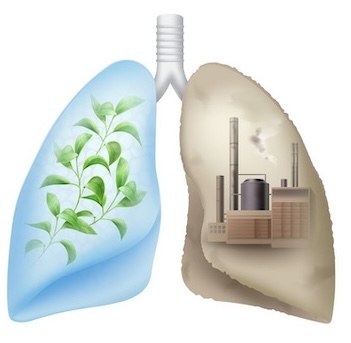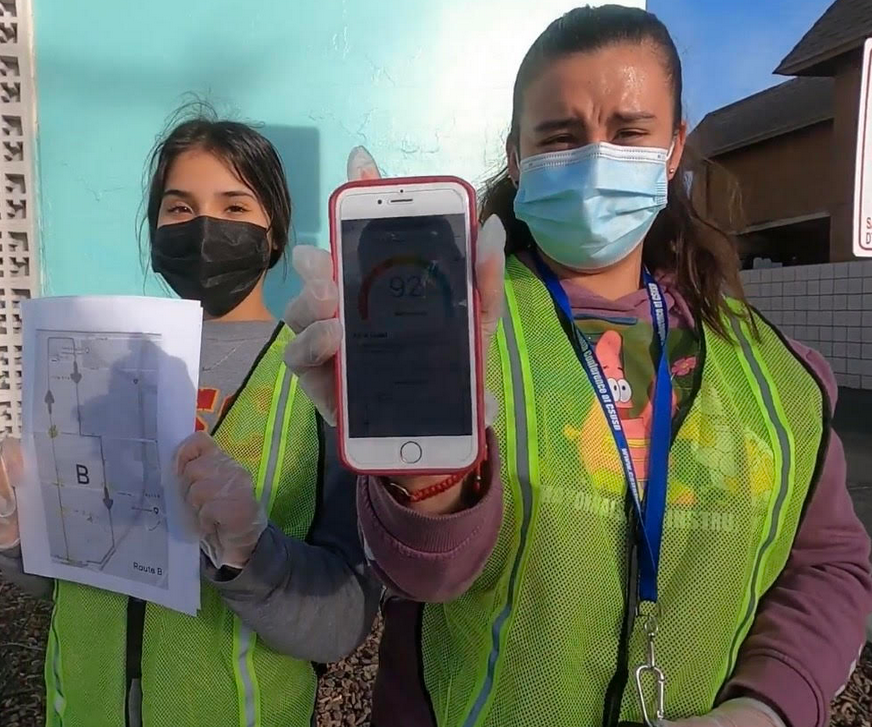By: Connie Valencia
I. Sustainability of Environmental Justice Efforts in Santa Ana
Sustainability results from socially equitable policies that address environmental health needs promote a clean environment, and funding to help support community needs. To develop a successful and sustainable Environmental Justice (EJ) movement at an organizational level in underserved communities, it is imperative to work with multiple partners. Getting Residents Engaged in Exercise and Nutrition-Madison Park Neighborhood Association (GREEN-MPNA), a resident-run non-profit organization established in 1987, supports the environmental justice movement in Santa Ana, California. Over the years, GREEN-MPNA has developed sustainable organizational practices that empower local residents and support the EJ movement in Santa Ana. These efforts that promote EJ have been supported by a group of faculty, staff members, and students that make up the GREEN-MPNA/UCI collaborative. The GREEN-MPNA/UCI collaborative comprises various departments within UCI, including the Research Justice Shop, School of Medicine, Environmental Law Clinic, Urban Planning, and Public Policy and Anthropology. The GREEN-MPNA/UCI collaborative has worked on major efforts to inform local policy, including Santa Ana’s general plan and the 2018-2021 California Air Resources Board (CARB) Grant. In addition, the GREEN-MPNA/UCI collaborative has helped bring additional resources to support environmental justice efforts, including grants, incentives for residents, training, and access to translation services to help engage Santa Ana residents. This blog will focus on the collaborative efforts of GREEN-MPNA and GREEN-MPNA/UCI to develop sustainable actions to support constituents needs.
II. Sustainable efforts and Inclusion
Sustainable efforts are fueled by diverse networks that work closely with community-based organizations and local residents. Collaborators such as GREEN-MPNA, familiar with community needs, culture, historical and political dynamics that shape health outcomes, can better connect and relate with local residents. Many of the GREEN-MPNA board members and staff are long-time residents of Santa Ana and work in the community in different capacities. Because of their love and dedication to the community of Santa Ana, they have developed a deep understanding of the various challenges experienced by residents. This insight allows them to connect with other residents and learn about the deleterious impacts caused by environmental injustices. In addition, GREEN-MPNA/UCI collaborators who work with residents gain insight into residents’ lived experiences that allow them to assess community needs and work on projects to improve quality of life. These actions, interventions, and projects ensure that residents, regardless of immigration/documentation status, feel comfortable engaging in events, meetings, and research projects that address community needs. In addition, project events and meetings are delivered in the language of choice to ensure that residents and members of the GREEN-MPNA/UCI collaborative can communicate effectively. These practices help foster a safe space that promotes inclusivity and trust to build community capacity, which in the long run, these efforts help improve the environment.
Two CUAL committee youth members displaying the air quality data collected on an air monitoring day in 2021.
CUAL committee on a toxic tour through the industrial corridor in Southeast Santa Ana in December of 2022. Picture Courtesy of Sarahi Gutierrez, Community Organizer.
III. Time and Community Capacity
Time is an important factor to foster trust among residents and develop an understanding of the types of resources available to the community to address environmental hazards. Developing sustainable partnerships between community-based organizations and university researchers takes time. “Community Capacity” is a framework designed to assess the types of resources available to support residents in achieving and improving overall health conditions and quality of life.1,2,3 Community capacity considers 10 characteristics, including the number of local, state, and federal leaders.1 This may include: i) the number of resident leaders, city council members and other elected officials working to support environmental justice initiatives, ii) the number of individuals actively participating in efforts related to environmental justice, iii) resources including funds, personnel, organizations that support EJ related initiatives, iv) Sense of Community that provides residents support and comfort to work together towards a common goal, and v) Communication at various levels across different partners to ensure that everyone is up to date and informed with the latest news. Communication can be written and verbal, which means that information can be accessed in person through conversations or via email, text, and public service announcements.
CUAL committee engaged in their biweekly workshops in Madison Elementary. Photo Courtesy of Sarahi Gutierrez, Community Organizer
IV. GREEN-MPNA/UCI Collaborative and Social Determinants of Health.
The GREEN-MPNA/UCI collaborative efforts help address underlying conditions or social determinants of health (SDOH). SDOH are defined as the social and environmental conditions that shape people’s health outcomes and quality of life. One key SDOH is the neighborhood and built environment. The work that the GREEN-MPNA/UCI collaborative is doing is addressing environmental conditions that promote clean air policies that will help reduce toxic emissions, which may help reduce the onset of asthma, upper respiratory-related illnesses, and the rate of hospitalizations. Long-term exposure to poor air quality has been found to contribute to higher rates of premature deaths. Low-income, vulnerable communities like Santa Ana are zoned for industrial and residential-related purposes. Residents, members of local schools, hospitals, and convalescent homes residing near industrial zones are all exposed to high levels of particulate matter and nitrous oxide due to historical zoning and redlining practices. An opinion article by Dr. Jun Wu, one of the UCI-GREEN-MPNA collaborators, stated that children living in a community by the industrial zone have a 20% increased risk of being diagnosed with asthma.
Benefits and Challenges of Working with Multiple Collaborators
Over the years, GREEN-MPNA has developed the capacity to work with multiple partners and communities impacted by EJ-related issues. GREEN-MPNA has developed meaningful partnerships outside UCI and across various sectors within the city of Santa Ana to help bring awareness and promote the adoption of equitable policies that support EJ needs. This includes the development of Comunidad Unida Aire Limpio (CUAL), partnerships with South Coast Air Quality Management District (SCAQMD), Santa Ana’s city council members, local community-based organizations, including Orange County Environmental Justice (OCEJ) and members of Santa Ana Unified School District.
There are benefits of working with multiple collaborators on EJ-related initiatives. For example, the GREEN-MPNA/UCI collaborators are working on various grants to measure air pollutants in Santa Ana from various sources. The goal is to inform and pressure state and local elected officials to support the passage of equitable and sustainable policies that promote clean air. This allows the GREEN-MPNA/UCI collaborative to work on different initiatives that engage youth and adult leaders in EJ-related initiatives. These actions also empower residents to engage in citizen science and encourage them to gain new skills, including reading air pollution levels using CalEnviroScreen and purple air monitors.
CUAL Science and Technology Sub-Committee, Learning about different air and environmental pollution forms. December 2022. Photo Courtesy of Leonel Flores, Environmental Justice Programs Manager.
CUAL Specialized Monitoring Sub-Committee, Learning how to develop their own specialized air monitoring system for the community. December 2022. Photo Courtesy of Leonel Flores, Environmental Justice Programs Manager.
The downside of having multiple partners is the lack of time. Lack of time to attend meetings to discuss updates may impact communication among various partners. In the long run, this may impact trust and strain the existing relationship. Moreover, having multiple partners will require additional meetings and time to ensure that tasks are clearly understood and written. Nonetheless, these efforts are essential to ensure that community needs are being met.
Each collaborative member provides a set of skills and expertise that have allowed them to work successfully. Members can write and develop grant proposals to obtain funding to support research project activities through this collaborative process. This includes increasing awareness of poor air quality through air monitoring, resident training, and participant incentives. Without funding, these types of projects are not possible.
About the Writer
Connie Valencia earned her Ph.D. from the Department of Population Health and Disease Prevention at the University of California, Irvine Program of Public Health. Connie was a 2020-22 Research Justice Fellow and worked with GREEN-MPNA on a Community-campus collaborative for the Community Air Monitoring Project. Connie’s research is focused on assessing civic engagement efforts related to air pollution and environmental justice issues among residents in Boyle Heights. For more information regarding the Research Justice Shop, please visit the website or contact researchjustice@uci.edu or follow us on Facebook, Instagram, Twitter, and LinkedIn.
References
- Freudenberg N, Pastor M, Israel B. Strengthening community capacity to participate in making decisions to reduce disproportionate environmental exposures. Am J Public Health. 2011 Dec;101 Suppl 1(Suppl 1):S123-30. doi: 10.2105/AJPH.2011.300265. Epub 2011 Oct 20. PMID: 22021323; PMCID: PMC3222508.
- Williamson DHZ, Yu EX, Hunter CM, Kaufman JA, Komro K, Jelks NO, Johnson DA, Gribble MO, Kegler MC. A Scoping Review of Capacity-Building Efforts to Address Environmental Justice Concerns. Int J Environ Res Public Health. 2020 May 26;17(11):3765. doi: 10.3390/ijerph17113765. PMID: 32466474; PMCID: PMC7312702.
- Goodman RM, Speers MA, McLeroy K, Fawcett S, Kegler M, Parker E, Smith SR, Sterling TD, Wallerstein N. Identifying and defining the dimensions of community capacity to provide a basis for measurement. Health Educ Behav. 1998 Jun;25(3):258-78. doi: 10.1177/109019819802500303. PMID: 9615238.



Follow us